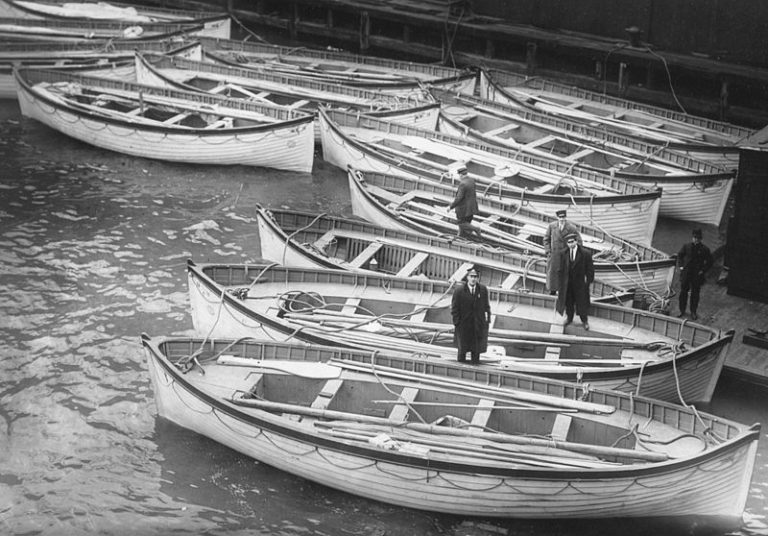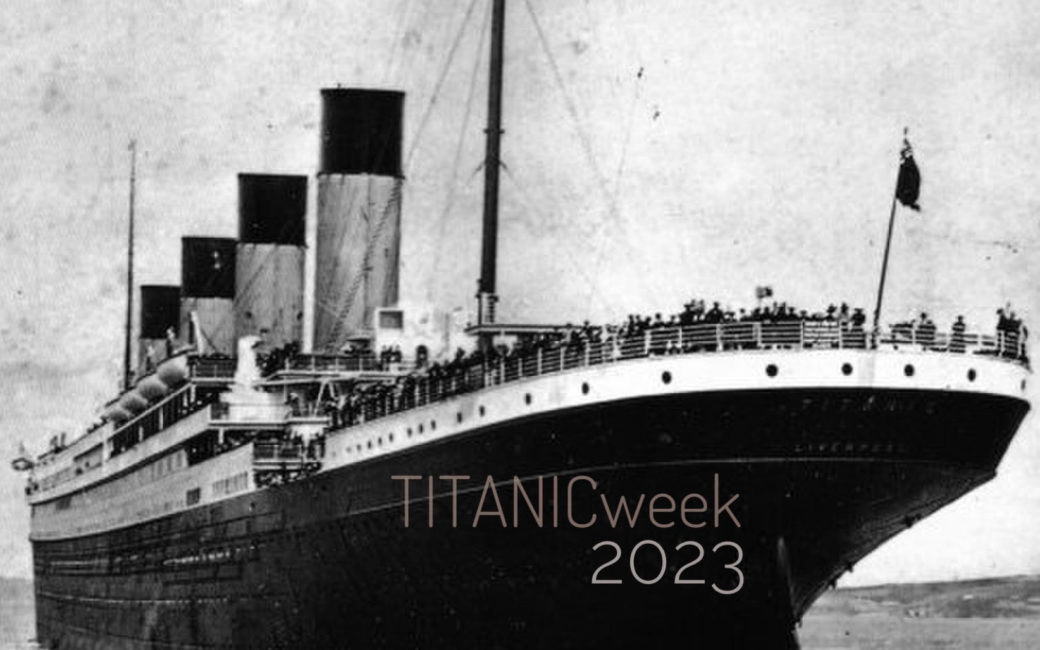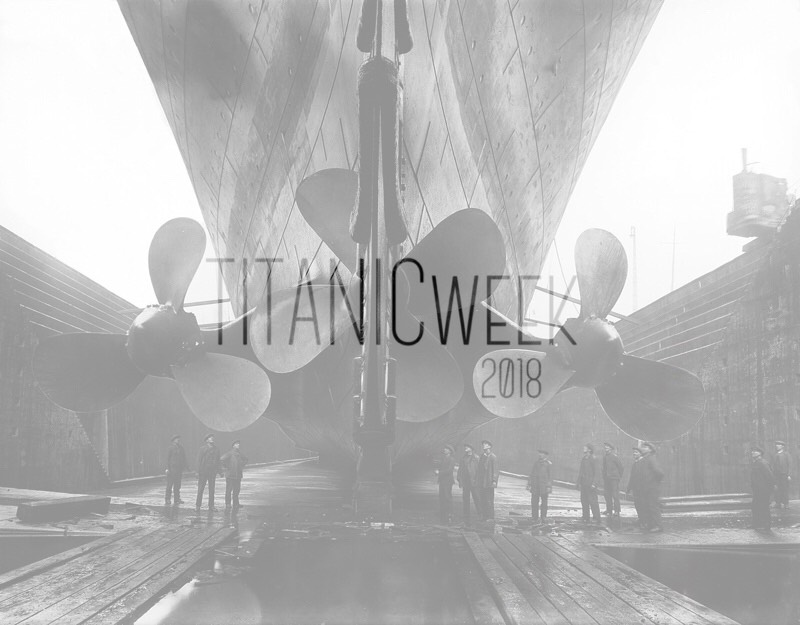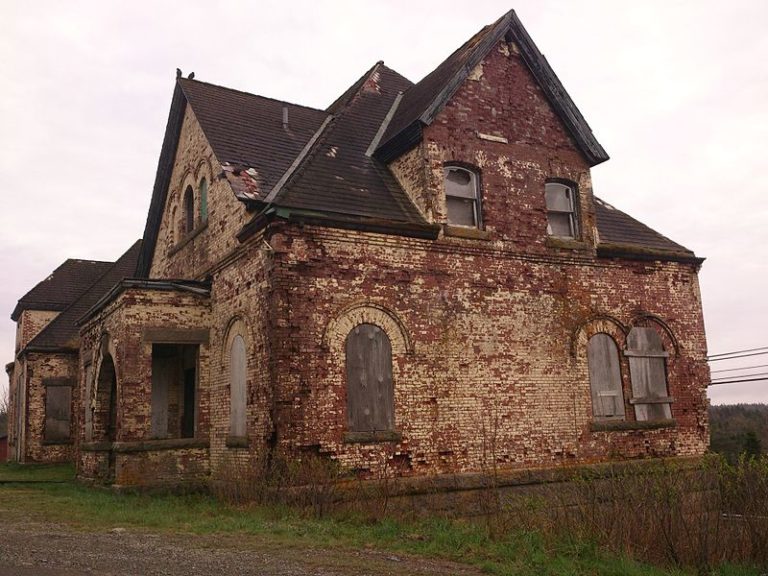"Truth Touched by Emotion": The Carpathia's Arrival in New York City
The news of the Titanic disaster had reached shore and spread even while its lifeboats were still being rescued by the Carpathia.
All thanks to the wireless telegraph.
Guglielmo Marconi's wireless "telegraphy" technology was truly a wonder of the modern age.
But beyond its dazzle, it functioned as an entirely public line of communication between operators--and anyone else who might care to know.
And so, as Titanic sank, its urgent, unbroken distress calls had been dispersed in real-time. Until around 2:00 a.m., when Titanic's voice quite suddenly went silent, and was not heard again.
At the New York Times office, editor Carr Van Anda was incredulous at first. "It can’t be true," he reportedly said. "The Titanic’s equipped with extra safety compartments."
But in the end, Van Anda was the sole editor to deduce the substance of Titanic's abrupt radio silence: she must have gone down.
The news sent New York City into havoc.
Some of the most prominent, celebrated, and famous New Yorkers, such as Colonel John Jacob Astor and Isidor Straus, had been on board Titanic. People swarmed the offices of the White Star Line in Manhattan, demanding the unknown fates of their family members and friends. Contradictory headlines mounted as they were barked from street corners and pinned to walls. Even still at sea, the rescue ship Carpathia was besieged by journalistic intrusion as it sailed toward the city with Titanic’s survivors.
It was plainly impossible to exist in New York City without knowing of the Titanic disaster.
Details, however, were sparse and often hypothetical.
The White Star Line, unsurprisingly, promoted only the most optimistic of reports: that everyone had been saved, and that Titanic was being towed into port.
The rescue ship Carpathia, still at sea with Titanic's 700-plus survivors, was on a mandatory media blackout. All wireless transmissions were restricted to personal messages, and conducted solely for passengers on board. The volume was so overwhelming that Titanic's junior operator Harold Bride, wheelchair-bound from frostbite to his feet, sat in to assist the Carpathia's operator in sending them all. Solicitations from journalists were ignored.
Carpathia was due to arrive in New York City on the evening of April 18th, shortly after 9:00 p.m. It had been three days since the disaster.
That night, people amassed by the dozens of thousands in a chilly, driving rain.
Anxious family and desperate press awaited the arrival of the passengers on board the rescue vessel. Two hundred police officers, some on horseback, surveilled the crowd. Medical staff were on standby, with stretchers waiting to be brought aboard. Traffic mounted; automobiles hydroplaned into curbs as they neared the pier.
The forty thousand people in the throng waited at the Cunard Line's usual docking spot: Pier 54.
Captain Arthur Rostron and the crew of the Carpathia had braced for the mania ahead. And so, the first stop on that rainy evening was to the White Star Line's Pier 59, where they quietly and diligently unloaded the Titanic's thirteen recovered lifeboats. The crew of the Carpathia had been unable to fit any more than that on board, and so seven of Titanic's lifeboats still floated on the open sea.

Titanic's lifeboats at Pier 54 in New York City, 1912.
PUBLIC DOMAIN
Then, Carpathia moved a few blocks onward, to Pier 54.
The media had made no effort to restrain itself, despite edicts from the mayor.
The New York Times had rented an entire floor in the Strand Hotel, which was located about a block from the pier. The Times had orchestrated the installation of telephone lines, so journalists at the scene could run to the Strand and dictate their stories to the newsroom in Times Square. They wanted to interview as many survivors as possible, and they had only three hours--until 12:30 a.m.--to do so.
Additionally, over 50 tugboats clotted up the harbor; they hounded the rescue ship as soon as it was in sight. Journalists on the tugboats' decks hollered into megaphones and over one another, offering the passengers above them cash for eyewitness accounts. Cameras popped in rapid sequence, their clouds of magnesium powder wilting in the rain. Each flashing bulb illuminated the Carpathia's weary passengers, standing dazed against the railings in the dark.
And on board the rescue ship, a journalist named Carlos Hurd anxiously waited for his chance.
He worked for the St. Louis Post-Dispatch, and had been on holiday on the Carpathia. And he had spent the past three days of the voyage transcribing a clandestine witness account against Captain Rostron's orders.
When the correct tug steamed up alongside Carpathia, Hurd appeared over the railing of an upper deck and dropped a manuscript wrapped up in canvas overboard. Afraid it would fall in the water and sink, he had created a makeshift flotation device for the dictionary-sized bundle, using a cigar box and champagne corks he had acquired from the ship's bar.
The manuscript was rushed to shore and printed for a next-day 'Extra" feature.
The headline read, "Titanic Boilers Blew Up, Breaking Her In Two After Striking Berg."
The ship finally docked at Pier 54, moving slowly due to the darkness and rainfall. Under Captain Rostron's orders, the Carpathia's passengers were the first to disembark, as he was concerned that madness would follow if the Titanic survivors were to precede them.
When the survivors began to appear, the scene fell still.
As the survivors came into the street dead silence fell over the crowd that was assembled, and even the flashlight batteries of the Press photographers ceased for the moment their bombardment.
When an unnamed female passenger stumbled off the gangway and fell weeping into the arms of a police officer, the spell was broken.
Journalist competition for one particular interview eclipsed all others that night: everyone wanted Harold Bride. They were to "get the Titanic wireless man’s story, if he’s alive,” the city editor of the New York Times demanded. And they wanted the Carpathia's wireless man, Harold Cottam, second-most.
The New York Times succeeded in scooping Bride and Cottam both, when their reporter Isaac Russell, accompanied by Guglielmo Marconi himself, was permitted on board Carpathia.
Bride was paid $1,000 for his interview, a fact to which he testified at the American Senate Inquiry to follow. He was later hauled off Carpathia, unable to walk due to the injuries he sustained on Collapsible B. Harold Cottam received $750 for his own interview.
Isaac Russell rushed back to the Times office to complete his exclusive story. He said he wept as he wrote.
“I turned back to my typewriter. They say literature is truth touched by emotion. I have written steadily for 20 years or more. If ever I wrote literature, that was the night.”
The Carpathia was set to depart at 4:00 p.m. the following day, an effort by the Cunard Line to remove the vessel from the debacle.
In that single day of rest, the ship became a tourist attraction, overrun with New Yorkers eager to gawk at the wireless shack that had, only days prior, heard the dots and dashes of Titanic's last words.
SOURCE MATERIAL
https://www.nytimes.com/2011/08/07/sunday-review/paying-for-news-its-nothing-new.html
https://www.encyclopedia-titanica.org/frauenthal-first-to-disembark-carpathia.html
https://www.irishcentral.com/roots/history/on-this-day-carpathia-new-york-titanic-survivors
https://www.wnyc.org/story/199399-100-years-ago-arrival-titanic-survivors-nyc-set-media-free-all/
https://www.walkingoffthebigapple.com/2012/04/waiting-for-carpathia-at-pier-54.html
https://www.encyclopedia-titanica.org/community/threads/newspaper-accounts-of-some-reactions.2920/













